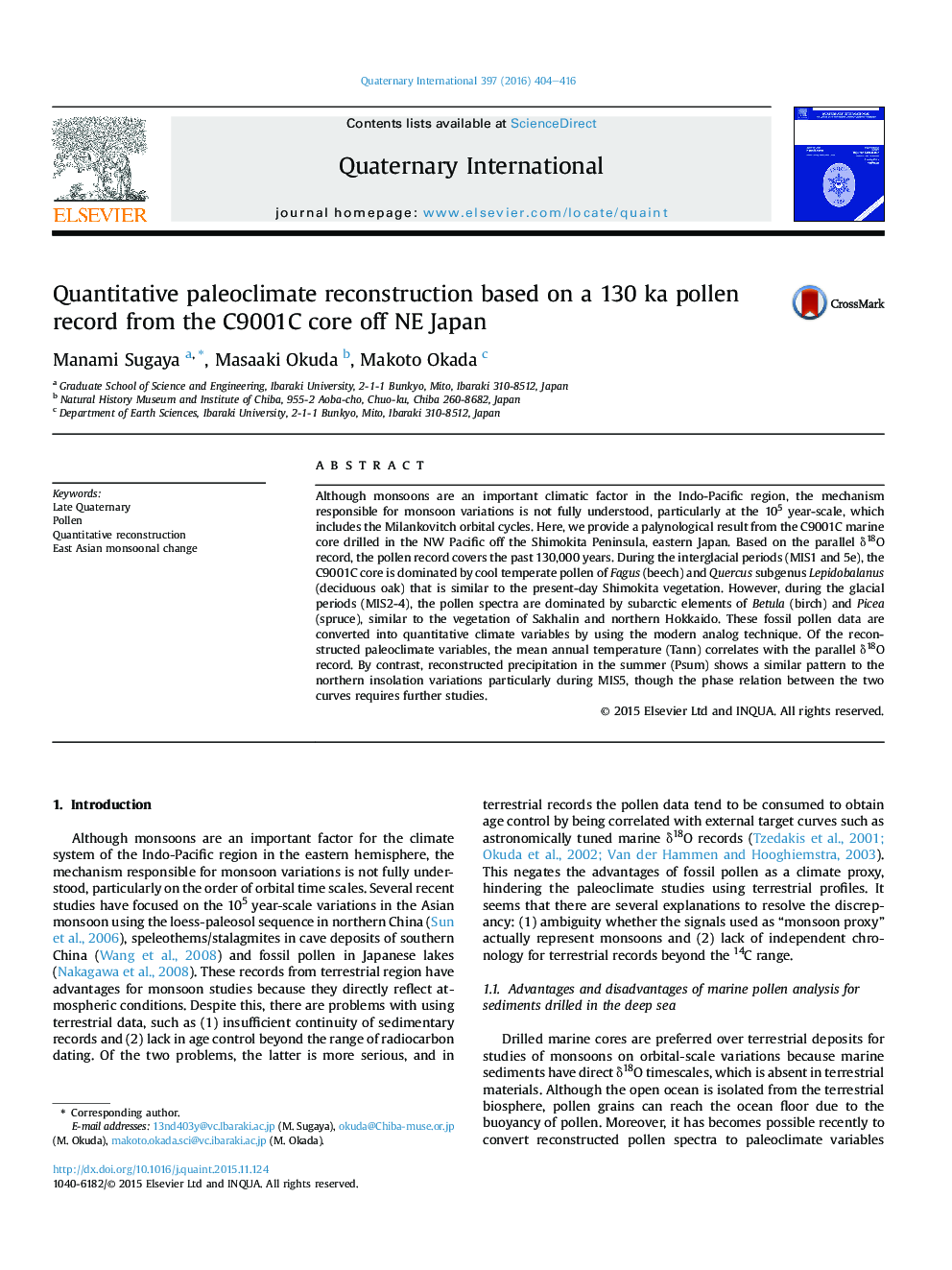| Article ID | Journal | Published Year | Pages | File Type |
|---|---|---|---|---|
| 7451380 | Quaternary International | 2016 | 13 Pages |
Abstract
Although monsoons are an important climatic factor in the Indo-Pacific region, the mechanism responsible for monsoon variations is not fully understood, particularly at the 105 year-scale, which includes the Milankovitch orbital cycles. Here, we provide a palynological result from the C9001C marine core drilled in the NW Pacific off the Shimokita Peninsula, eastern Japan. Based on the parallel δ18O record, the pollen record covers the past 130,000 years. During the interglacial periods (MIS1 and 5e), the C9001C core is dominated by cool temperate pollen of Fagus (beech) and Quercus subgenus Lepidobalanus (deciduous oak) that is similar to the present-day Shimokita vegetation. However, during the glacial periods (MIS2-4), the pollen spectra are dominated by subarctic elements of Betula (birch) and Picea (spruce), similar to the vegetation of Sakhalin and northern Hokkaido. These fossil pollen data are converted into quantitative climate variables by using the modern analog technique. Of the reconstructed paleoclimate variables, the mean annual temperature (Tann) correlates with the parallel δ18O record. By contrast, reconstructed precipitation in the summer (Psum) shows a similar pattern to the northern insolation variations particularly during MIS5, though the phase relation between the two curves requires further studies.
Related Topics
Physical Sciences and Engineering
Earth and Planetary Sciences
Geology
Authors
Manami Sugaya, Masaaki Okuda, Makoto Okada,
